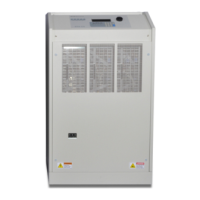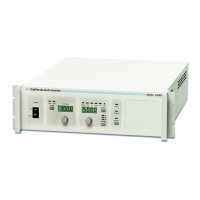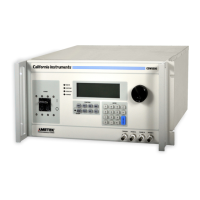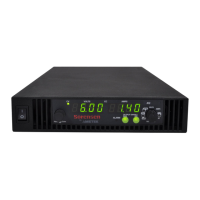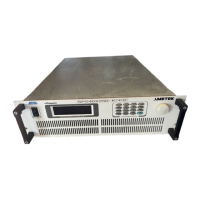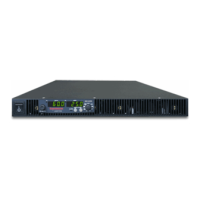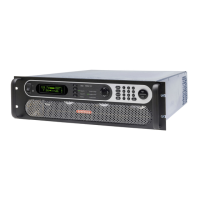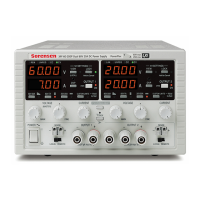User Manual AMETEK Programmable Power
RS Series 134
5.4 System Interface Board
The System Interface Board is located in the top section of the RS unit. To access this
assembly, the side and front covers needs to be removed. The System Interface board, A6,
receives the oscillator signal from the CPU controller assembly for all phases and passes it
through to all three amplifiers whose gains are controlled by a signal from the over current
circuit. The over current circuit senses the RMS value of the current. If the load current exceeds
the programmed value, the output of this sensing circuit reduces the amplitude of the oscillator
drive signal. The output of the unit then becomes a constant current output, with the output
voltage dropping as the load increases.
The System interface also monitors a variety of status signals from the amplifiers. This includes
PFC good, over temperature signals and DC bus regulation good signals. If any status signal is
false, the system interface board will shut down the RS. At power on, all status signals have to
return good (TRUE) or the RS system power up sequence will be halted.
Finally, the System interface assembly also routes the required system interface bus signals
between multiple RS90 chassis for multi-box configurations (RS180 through RS540). A DB-37 to
DB-37 system interface cable is used to connect two or more RS units in a multi-box
configuration. Each RS90 provides two sets of system interface connectors on the rear-panel.
One is the master out (unit with CPU controller assembly installed), the other the Auxiliary in.
(unit without CPU controller or with CPU controller disabled.) The CPU controller can be
disabled using the internal DIP switch located on the GPIB / RS232C / IO assembly. (Requires
removal of the rear cover).
5.5 Current / Voltage Sensor Board
The current and voltage sensor boards, A4 & A5, sense the output current and voltage of all six
amplifiers and feeds this information back to the system interface board. These same signals
are also used by the controller for all measurement functions. Voltage sense is accomplished
either internally or externally. For best voltage regulation at the EUT, external sense connections
should be made using the External Sense terminal block located at the top of the back-panel.
Alternatively, internal sense mode may be selected. In this case, the voltage is sensed at the
sensor board.
5.6 Low Voltage Power Supply
The Low Voltage power supplies A14 & A15 are mounted behind the system interface board in
the center section of the RS chassis. These two assemblies generate all required low voltage
DC outputs. These outputs from the LV Power supplies provide analog and logic power to all
the modules.
a) +/- 19 V to the System Interface board and power modules.
b) + 9 V to the oscillator.
c) + 24 V to all contactors and LV cooling fan.
d) Isolated + 8 V for the GPIB/RS232 board.
Four green LED’s on the system interface board are lit when the ± 15 V and ± 19 V are in
regulation. If an overload condition causes the output to drop more than 10% or the output has
failed, the corresponding LED will extinguish. This feature is helpful in troubleshooting the unit.
See Service section 6.
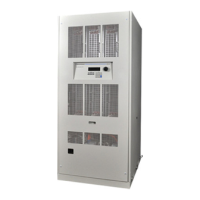
